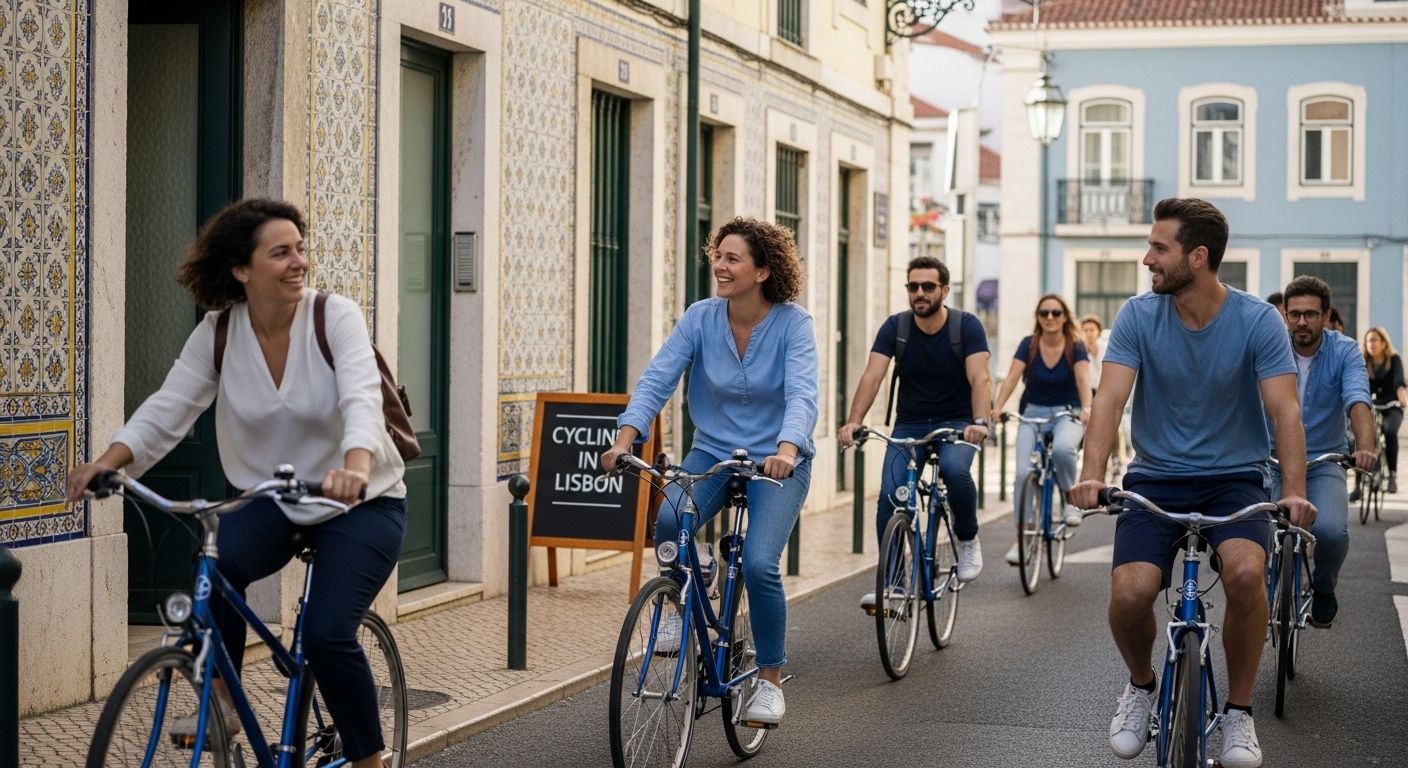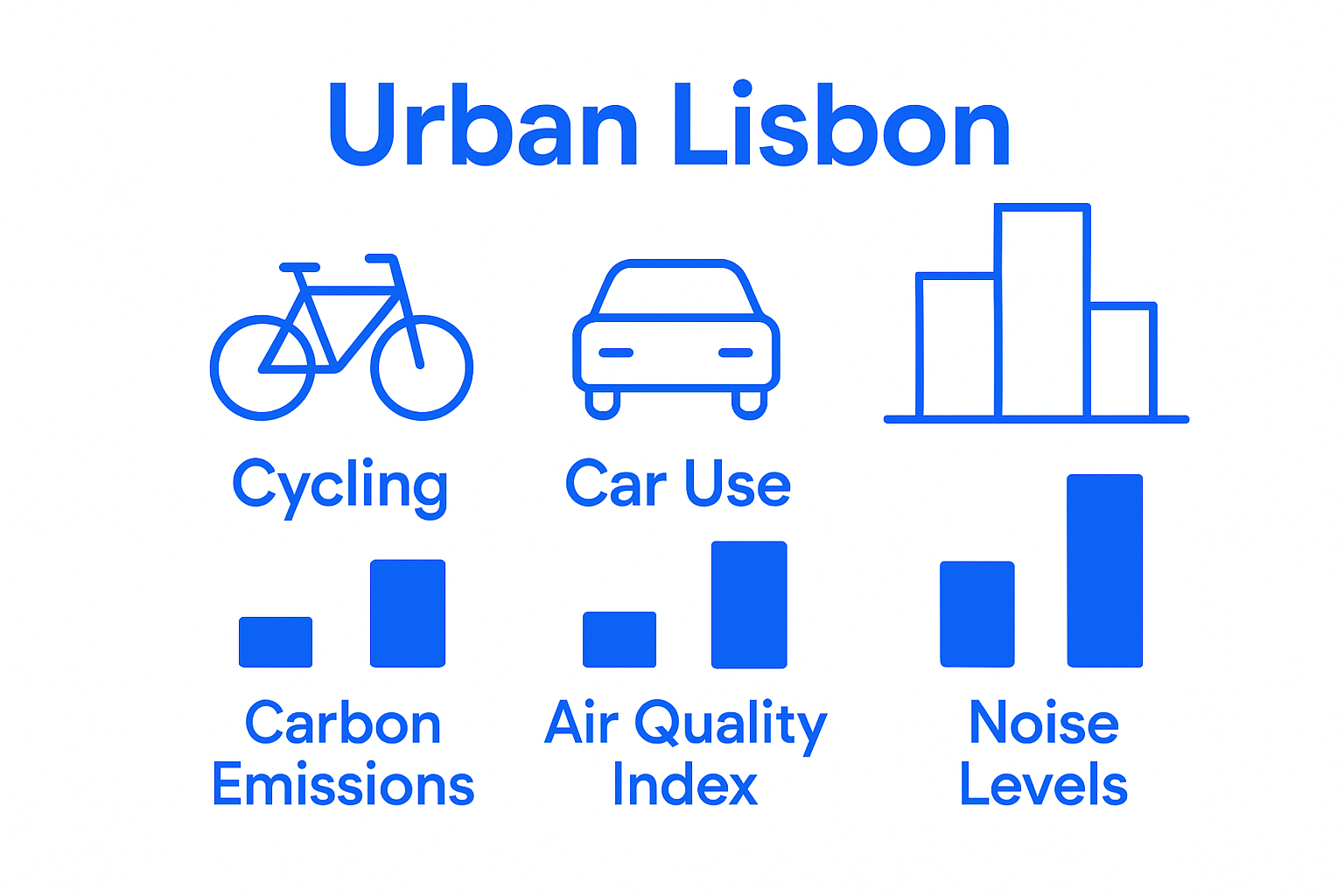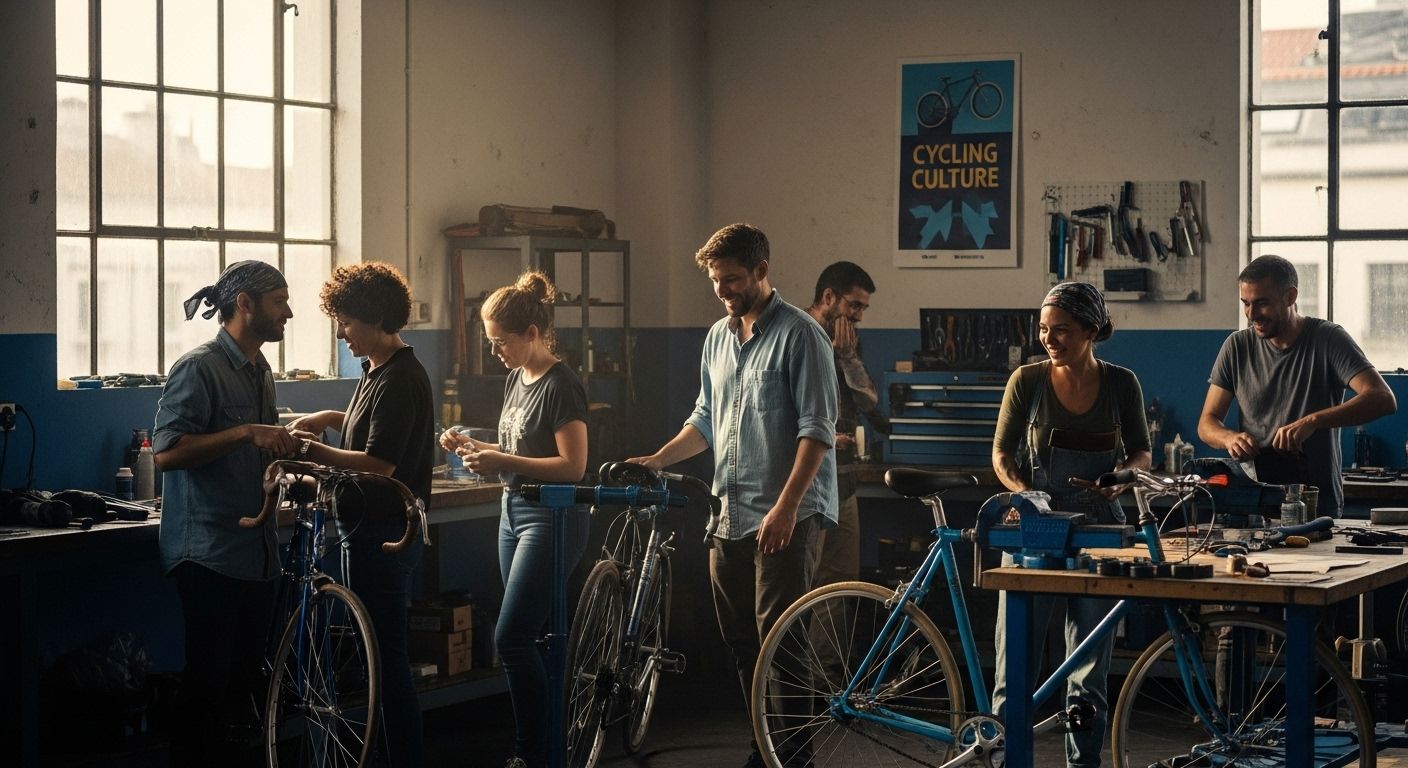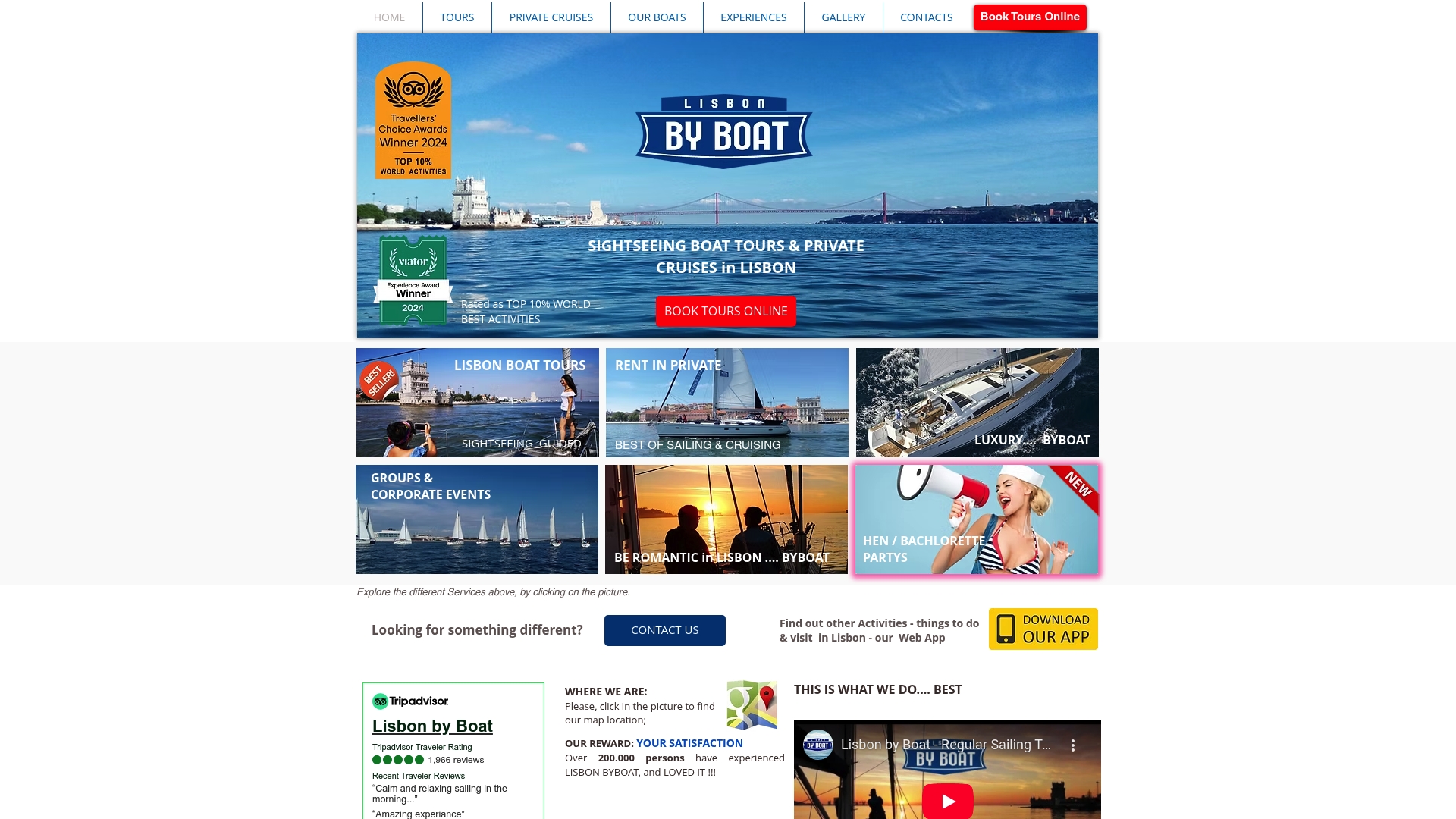Understanding Cycling in Lisbon: A Comprehensive Guide
- lisbonbyboat
- Sep 7
- 8 min read

Lisbon’s city streets are seeing a quiet transformation. The number of urban cyclists has grown by over 80 percent in the past decade, and it is changing how locals and tourists get around. Surprising as it sounds, the biggest hurdle is not the city’s famous hills but the historic identity of its streets and the need for smarter infrastructure.
Table of Contents
Quick Summary
Takeaway | Explanation |
Cycling reduces carbon emissions and pollution | Cycling significantly lessens individual carbon footprints and improves urban air quality, benefiting both the environment and public health. |
Lisbon’s cycling infrastructure needs improvement | Historical layouts create challenges for safe cycling; strategic urban planning is essential for enhancing connectivity and safety for cyclists. |
Community initiatives boost cycling culture | Grassroots organizations promote cycling through workshops, advocacy, and social events, fostering a vibrant cycling community in Lisbon. |
Tourists benefit from cycling experiences | Biking allows tourists to explore Lisbon intimately, engaging with local culture while providing a cost-effective and immersive transportation alternative. |
Safety precautions are essential for cyclists | Wearing helmets and using lights improves cyclist safety; understanding Lisbon’s unique terrain is vital for a comfortable riding experience. |
The Importance of Cycling in Lisbon’s Urban Environment
Cycling in Lisbon represents more than just a transportation method. It embodies a sustainable urban mobility solution that connects people, reduces environmental impact, and transforms urban landscapes. Understanding the significance of cycling requires exploring its multifaceted role in Lisbon’s urban ecosystem.
Environmental and Health Benefits
Urban cycling offers profound environmental advantages for Lisbon. According to research from the University of Lisbon, cycling can significantly reduce carbon emissions and improve urban air quality. The city’s unique geography and climate make it an ideal location for bicycle transportation, with mild temperatures and relatively flat terrain in central areas.
Key environmental benefits include:
Reduction of personal carbon footprint
Decreased urban traffic congestion
Minimal infrastructure maintenance costs
Improved air quality and reduced noise pollution

Urban Mobility and Infrastructure Challenges
Despite promising potential, Lisbon faces notable challenges in developing a comprehensive cycling infrastructure. The city’s historical layout, characterized by narrow streets and steep hills, presents unique obstacles for widespread bicycle adoption. These geographical constraints require innovative urban planning approaches to create safe, interconnected cycling networks.
Research indicates significant barriers to cycling include safety concerns, physical effort requirements, and limited dedicated bicycle lanes. Urban planners must address these challenges by developing integrated transportation strategies that prioritize cyclist safety and convenience. Our guide on outdoor activities in Lisbon provides additional context about urban mobility options.
By recognizing cycling as a critical component of sustainable urban development, Lisbon can gradually transform its transportation landscape, creating a more environmentally friendly, health-conscious urban environment that prioritizes citizen mobility and ecological responsibility.
Exploring Lisbon’s Cycling Culture and Community
Lisbon’s cycling community represents a vibrant and evolving ecosystem of passionate urban cyclists, grassroots organizations, and innovative mobility enthusiasts. This dynamic network goes beyond mere transportation, embodying a social movement that challenges traditional urban mobility paradigms and promotes sustainable lifestyle choices.
Community Initiatives and Grassroots Organizations
The city hosts numerous community-driven cycling initiatives that transform bicycling from a personal transportation choice into a collective social experience. According to research examining Lisbon’s community bicycle shop, organizations like Cicloficina dos Anjos play a crucial role in promoting bicycle repair, maintenance, and community engagement.
Significant community characteristics include:
Collaborative bicycle repair workshops
Cycling advocacy groups
Social riding events and group tours
Educational programs on sustainable mobility
Social Dynamics and Urban Identity
Cycling in Lisbon has emerged as more than a transportation method. It represents a statement of urban identity, environmental consciousness, and personal freedom. The cycling community actively challenges existing urban mobility structures, pushing for more inclusive and sustainable infrastructure. Explore Lisbon’s summer activities to understand how cycling integrates with the city’s vibrant lifestyle.
Interestingly, the cycling culture reflects broader societal transformations. Young professionals, students, and urban innovators are increasingly adopting bicycles as a symbol of progressive urban living. This cultural shift demonstrates how individual transportation choices can collectively reshape urban environments and social interactions.

Key Features of Lisbon’s Cycling Infrastructure
Lisbon’s cycling infrastructure represents a complex network of interconnected routes, dedicated lanes, and strategic urban planning designed to support sustainable mobility. While still evolving, the city’s approach to bicycle infrastructure demonstrates a commitment to creating a more bike-friendly urban environment.
Bicycle Lane Network Design
The bicycle lane network in Lisbon is characterized by its strategic but challenging implementation. According to official cycling infrastructure research, the city’s bike paths vary significantly in design, width, and surface condition. These lanes are not uniformly distributed, reflecting the historical urban landscape’s complex topography.
Key infrastructure characteristics include:
Mixed dedicated and shared lane systems
Varied lane surface types (asphalt, concrete, marked paths)
Connections between historical districts and modern urban zones
Elevation-adaptive route planning
Bike Sharing and Support Systems
Lisbon has developed comprehensive bike sharing systems that complement its physical infrastructure. The GIRA bike-sharing program provides an integrated transportation solution, offering multiple docking stations throughout the city. Check out our Lisbon travel tips to understand how these systems enhance urban mobility.
These support systems are crucial in making cycling accessible, providing convenient rental options for residents and tourists alike. The infrastructure goes beyond physical lanes, incorporating digital platforms that help users locate bikes, plan routes, and understand the city’s cycling ecosystem.
To help clarify the characteristics and challenges of Lisbon’s cycling infrastructure, the table below summarizes key infrastructure features and related obstacles highlighted in the article.
Infrastructure Feature | Description | Unique Challenge |
Dedicated Bike Lanes | Special lanes for cyclists, often marked on roads | Not uniformly distributed across the city |
Shared Lane Systems | Lanes shared between cyclists and other vehicles | Safety concerns due to mixed traffic |
Lane Surface Types | Includes asphalt, concrete, and marked paths | Surface conditions vary greatly |
Historical Connections | Routes linking historic and modern urban zones | Narrow streets limit space for bikes |
Elevation-Adaptive Routes | Lanes planned considering the city’s topography | Steep hills increase physical effort |
Bike Sharing Stations | Docking points for city-wide bike rentals (e.g., GIRA) | Accessibility varies by neighborhood |
Digital Support Platforms | Apps for finding bikes and planning cycling routes | Adoption among residents and tourists |
Benefits of Cycling for Tourists and Corporate Events
Cycling in Lisbon offers transformative experiences for both tourists exploring the city and corporate teams seeking innovative team-building activities. Beyond traditional transportation, cycling becomes a dynamic platform for engagement, wellness, and collective exploration that transcends conventional travel and professional development approaches.
Tourist Experience Enhancement
For tourists, cycling provides an immersive method of discovering Lisbon’s intricate urban landscape. Unlike traditional sightseeing, bicycle tours allow visitors to navigate through narrow historical streets, experience local neighborhoods, and interact with the city’s architectural and cultural nuances at a personalized pace. According to research on cycle tourism, cycling tourists tend to engage more deeply with local economies, spending on accommodations, culinary experiences, and cultural interactions.
Key advantages for tourists include:
Personalized exploration of urban landscapes
Enhanced physical engagement with city environments
Cost-effective transportation alternative
Opportunities for spontaneous discoveries
Corporate Team Building and Wellness
Corporate events can leverage cycling as a powerful team-building and wellness strategy. Research demonstrates that cycling activities can significantly impact employee productivity and group dynamics. Explore our outdoor activities guide to understand how cycling can transform corporate experiences.
By introducing cycling experiences, organizations can foster collaboration, improve physical health, and create memorable shared experiences that extend beyond traditional team-building exercises. The combination of physical activity, collective challenge, and urban exploration provides a unique platform for team bonding and personal development.
Tips for Enjoying a Safe and Memorable Cycling Experience in Lisbon
Cycling in Lisbon requires a strategic approach that balances adventure with personal safety. Navigating the city’s unique urban landscape demands awareness, preparation, and a nuanced understanding of local cycling dynamics. Successful cyclists blend technical skills with cultural sensitivity to create an enriching mobility experience.
Essential Safety Precautions
Safety forms the cornerstone of an enjoyable cycling journey through Lisbon. According to national traffic safety guidelines, cyclists must prioritize visibility, protective gear, and situational awareness. Lisbon’s varied terrain and historical street layouts present unique challenges that require heightened attention and proactive safety measures.
Critical safety recommendations include:
To support planning and enhance safety for cyclists, the following table outlines essential safety precautions and their practical impact when cycling in Lisbon.
Safety Precaution | Practical Impact |
Wear a properly fitted helmet | Reduces risk of head injury |
Use front and rear lights | Increases visibility in low light conditions |
Wear bright or reflective clothing | Makes cyclists more visible to motorists |
Maintain your bicycle | Ensures reliable and safe operation |
Understand terrain and streets | Helps anticipate urban hazards and obstacles |
Stay situationally aware | Allows rapid response to traffic changes |
Always wear a properly fitted helmet
Use front and rear lights during low visibility conditions
Wear bright or reflective clothing
Maintain your bicycle in good working condition
Navigating Lisbon’s Urban Terrain
Mastering Lisbon’s cycling environment requires understanding its complex topographical and infrastructural characteristics. The city’s steep hills, narrow streets, and mixed traffic conditions demand adaptable cycling techniques. Learn more about Lisbon’s outdoor activities to complement your cycling experience.
Successful urban cycling in Lisbon involves anticipating potential challenges, maintaining moderate speeds, and developing situational awareness. Cyclists should remain flexible, patient, and prepared to dismount when necessary, especially in densely populated or challenging terrain areas.
Experience Lisbon from a New Angle: Combine Cycling Insights with Unforgettable Boat Tours
Embracing cycling in Lisbon brings you closer to the city’s vibrant culture, but even the best urban rides have their limits. If the steep hills, narrow streets, and desire for a fresh perspective leave you searching for more, it’s time to get a view of Lisbon that only the water can provide. Imagine drifting by the same historical sights you cycle past, but from the calm and comfort of a yacht or catamaran. See Lisbon’s iconic coastline and monuments in a totally new light—no traffic, no obstacles, just pure discovery.

Ready to turn your understanding of Lisbon into real adventure? Book a sailing tour along Lisbon’s coastline, where our guided cruises unlock the untold stories and stunning views you miss on land. For tailored experiences, discover our private cruise options or learn more with our Lisbon travel tips. Secure your spot now and experience why the best way to truly see Lisbon starts on the water.
Frequently Asked Questions
What are the environmental benefits of cycling in Lisbon?
Cycling in Lisbon significantly reduces carbon emissions, improves urban air quality, decreases traffic congestion, and minimizes infrastructure maintenance costs.
How can I ensure my safety while cycling in Lisbon?
To stay safe while cycling in Lisbon, always wear a properly fitted helmet, use front and rear lights in low visibility conditions, wear bright or reflective clothing, and maintain your bicycle in good working condition.
What challenges does Lisbon face in developing cycling infrastructure?
Lisbon faces challenges such as its historical layout with narrow streets and steep hills, safety concerns for cyclists, limited dedicated bike lanes, and the physical effort required for cycling in the city’s varied terrain.
How can cycling enhance the tourist experience in Lisbon?
Cycling allows tourists to explore Lisbon’s unique urban landscape at their own pace, engage more deeply with local economies, and discover neighborhoods and cultural landmarks that might be missed when using traditional transportation methods.
Recommended


Comments